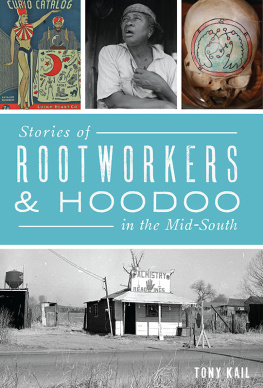Dedicated to Dan Clack, a family friend.
Lieutenant Daniel John Clack,
1st Battalion, The Rifles,
killed in action in Afghanistan on 12 August 2011
First published in Great Britain in 2016 by
PEN & SWORD MILITARY
an imprint of
Pen and Sword Books Ltd
47 Church Street
Barnsley
South Yorkshire S70 2AS
Copyright Tony Rea, 2016
ISBN: 978 1 47383 425 5
PDF ISBN: 978 1 47387 060 4
EPUB ISBN: 978 1 47387 059 8
PRC ISBN: 978 1 47387 058 1
The right of Tony Rea to be identified as the author of this work has been asserted by him in accordance with the Copyright, Designs and Patents Act 1988.
A CIP record for this book is available from the British Library
All rights reserved. No part of this book may be reproduced or transmitted in any form or by any means, electronic or mechanical including photocopying, recording or by any information storage and retrieval system, without permission from the Publisher in writing.
Printed and bound in England
by CPI Group (UK) Ltd, Croydon, CR0 4YY
Typeset in Times New Roman by Chic Graphics
Pen & Sword Books Ltd incorporates the imprints of Pen & Sword Archaeology, Atlas, Aviation, Battleground, Discovery, Family History, History, Maritime, Military, Naval, Politics, Railways, Select, Social History, Transport, True Crime, Claymore Press, Frontline Books, Leo Cooper, Praetorian Press, Remember When, Seaforth Publishing and Wharncliffe.
For a complete list of Pen and Sword titles please contact
Pen and Sword Books Limited
47 Church Street, Barnsley, South Yorkshire, S70 2AS, England
E-mail:
Website: www.pen-and-sword.co.uk
Introduction
How many citizens of South Devon considered themselves victors by November 1918? Perhaps we shall never know. Relief, grief for fathers, sons, brothers or lovers lost in war, quiet contemplation these are as likely to have been the overriding emotions away from newspaper headlines. This book attempts to give voice to the unsung heroes and heroines of this area. Within its pages are stories of the hopes, fears, sacrifice and endurance of the men and women of South Devon.
There were occasional, unusual highlights: the accidental shooting of two off-duty officers, a hospital ship torpedoed off the South Devon coast, a British airship crash landing on Dartmoor near Ivybridge. Otherwise life went on, bounded by the seasons, the weather and news from foreign fields.
Geographically the book covers an area that is roughly from the present day eastern boundary of the city of Plymouth to the River Exe, excluding the city of Exeter. This area is roughly bound to the north by Dartmoor and to the south by the sea. It comprises the modern day administrative districts of Teignbridge, Torbay and the South Hams. However, geographic boundaries have not served to impede the telling of a good story and so, at times, the reader is taken beyond these somewhat artificial parameters and occasionally to distant continents in order to complete the narrative.
The war broke out in the summer of 1914 and this is as good a starting point as any, though occasionally the narrative turns to events prior to this date in order to make specific points of explanation. Fighting ceased in November 1918 and a peace treaty was signed in the summer of 1919, but wounded servicemen were continuing to die into the 1920s. For convenience the main body of the book finishes in 1918.
Celebrations in Aveton Gifford to mark return of peace. (Cookworthy Museum, Kingsbridge)
That war is now commonly referred to as the First World War, though at the time was known simply as The War or the Great War. Throughout the book the term Great War is used.
South Devon was, in 1914, much as it is now. The main differences being fewer people, smaller towns and villages and the absence of motor vehicles, balanced by a busier railway network.
Devons population had not grown as rapidly in the nineteenth century as in most other parts of the country. For example, whilst in 1801 Devon was the fourth largest county by population, a hundred years later it had been overtaken and was fifteenth largest. There were exceptions. The coastal resort towns were growing quickly and Newton Abbot had expanded as it was a sub-regional railway centre.
A troop train leaving Paignton, 1914. (Totnes Image Bank)
Littlehempston, home to Private Barter (see ) remains. Its wartime story is typical of South Devon, a land of small towns and villages, coast and farmland; young men went to fight, horses were requisitioned. Those left behind carried on with the farming and waited. Some houses were eventually used as hospitals or convalescent homes for servicemen, and German PoWs arrived to work on the farms.
There were four or five towns in what is now the district of South Hams (four or five as it is uncertain as to what constitutes the difference between a large village and a small town). These were Dartmouth, Kingsbridge, Modbury, Salcombe and Totnes; Ivybridge was a small but important industrial village then. In Teignbridge were Ashburton, Bovey Tracey, Buckfastleigh, Newton Abbot and Teignmouth. Then there were the seaside resorts of Dawlish, Torquay and Paignton and the fishing port at Brixham. Every other site of habitation ranged from a large village to a hamlet.
Each of these places was affected, to a lesser or greater degree, by the war. Many young men, some of them Reservists or Territorials, others answering Kitcheners call to arms, went away to fight. Some never came home.
To understand how local life functioned in the early twentieth century and, crucially, how the mobilisation of August 1914 worked how so many men and their horses were very quickly moved out of south Devon the reader will need to know more about the contemporary railway network.
As it does now, the Great Western Railway ran west from Exeter to Plymouth but with five branches and many, many more stations. At Newton Abbot branches thrust north to Heathfield, Bovey Tracey and Mortonhampstead, and south to Torbay and Kingswear. At Totnes a branch line went to Buckfastleigh and Ashburton. At South Brent a substantial branch, known as the Primrose line, went south to Kingsbridge. Shortly before reaching Plymouth, a branch went south-east to Turnchapel and Yealmpton.
In addition, in 1914 it was possible to stand on a platform at Exeter St Davids station and witness trains bound for Plymouth setting off in both northerly as well as southerly directions, for the London South Western Railway went to Plymouth via Crediton, Okehampton, Tavistock and Bere Alston. There was also a line from Exeter St Davids to Heathfield, which joined the Newton Abbot Mortonhampstead branch.

















